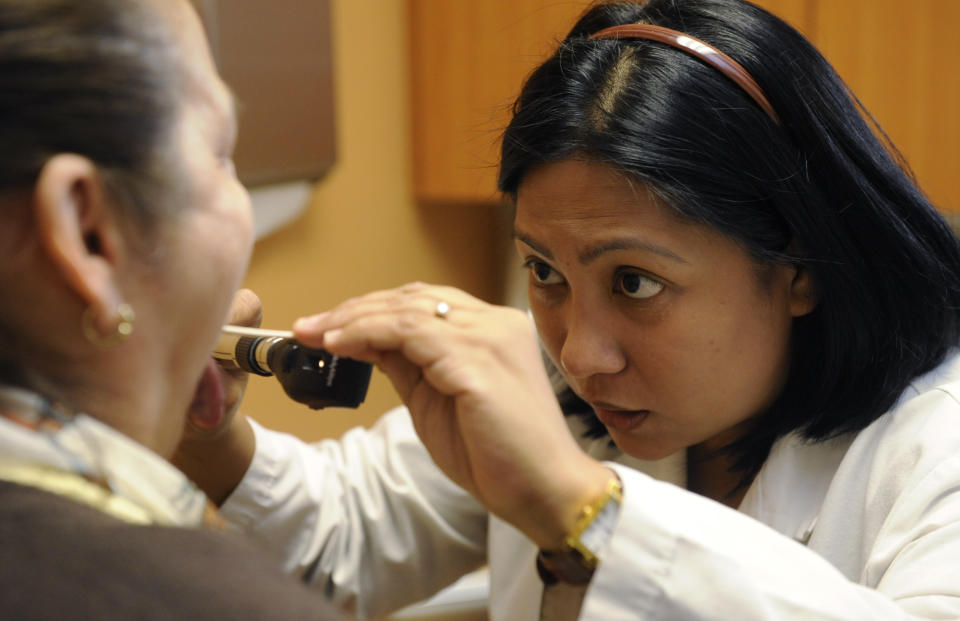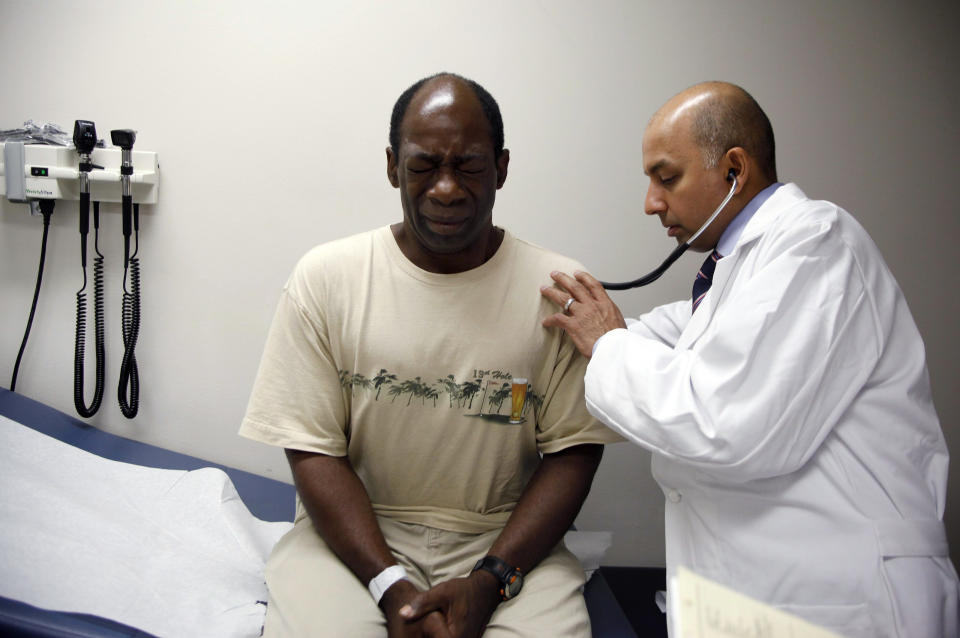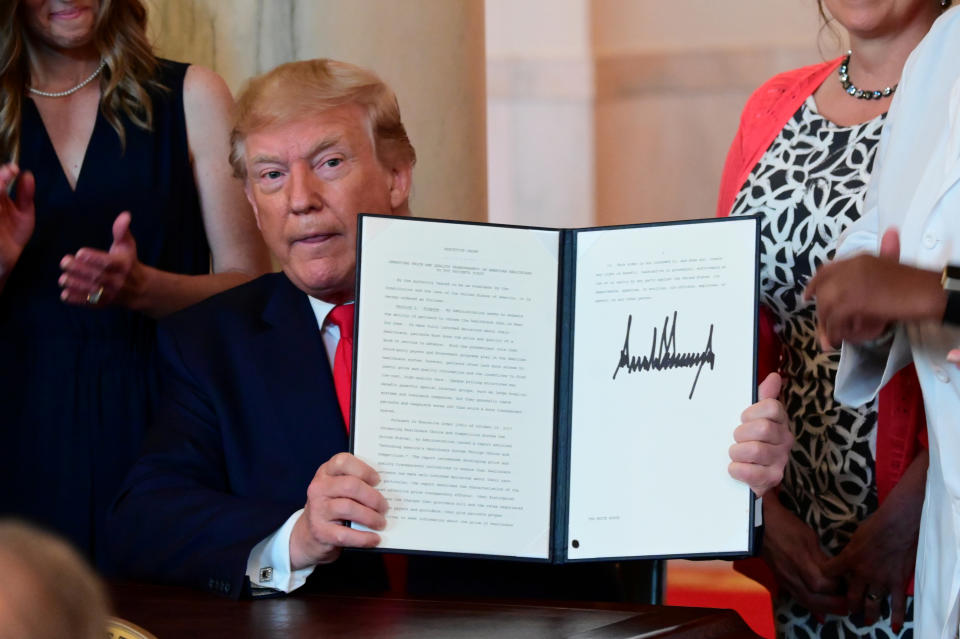What is direct primary care? 'Think of a combination of Netflix and Costco'
Direct primary care (DPC) has become an intriguing alternative to the pricey system that is American health care.
“Think of a combination of Netflix and Costco,” Dr. Jeffrey Gold, a family physician who sees his patients through DPC, told Yahoo Finance. “With Netflix, you pay a monthly fee to have streaming movies and TV shows — maybe there’s a month you watch five, maybe there’s a month you watch zero, but you still pay the same fee. The only difference with direct primary care is we obviously don’t have the infrastructure to carry 2 million users. So we do limit our panel size to about 600 to 1,000 patients.”
He continued: “But it’s also like Costco in the sense that by being a member of the practice, you’re getting discounts from anywhere from 70-85% on labs, many medications, imaging studies, and specialty visits.”

The American Academy of Family Physicians defines direct primary care as giving “family physicians a meaningful alternative to fee-for-service insurance billing, typically by charging patients a monthly, quarterly, or annual fee. This fee covers all or most primary care services including clinical and laboratory services, consultative services, care coordination, and comprehensive care management.”
Gold is president of Gold Direct Primary Care and co-founder of the Massachusetts chapter of the Free Market Medical Association (FMMA) alongside Adam Russo of the PHIA Group. The FMMA is part of a free market movement in health care pushing for more affordable services for both doctors and patients.
‘A Stockholm Syndrome’ with the current system
The problem that direct primary care attempts to solve relate to the relationship between patients and health care providers.
“Overall, we’ve devalued the relationship between a primary care doctor and the patients,” Gold said. “There are a lot of factors that go into it, a lot of fault to go around. … At its core, everybody needs a relationship with a primary care doctor that can not only help prevent illness, but also be there to treat the acute problem and actually be a navigator [for] this complex labyrinth that we have a system.”
Direct primary care typically consists of a contract between the two, “under which the provider agrees to deliver primary care services in exchange for a monthly fee, which typically runs between $50 and $150,” according to The Commonwealth Fund (TCF). Much like Netflix, it is like a subscription-based service. As a result, there is no middle man involved, solidifying the patient/doctor relationship.
“We have a Stockholm Syndrome with the current health care system,” Gold said, adding: “It’s resistance to change.”

While employer health care does ensure that most working Americans have some kind of health insurance, the costs are still high. According to a report from the TCF, “employer plan premium contributions and out-of-pocket costs, like those for prescription drugs, are eating up an increasing portion of household budgets.” An estimated 23.6 million Americans with employer coverage had high premium contributions, high out-of-pocket costs, or both, according to the report.
Much of the issue stems from the fact that different hospitals and providers charge various amounts for the same type of service, depending on who the payer is or what their insurance plan is. With DPC, there are no hidden fees — just a flat rate.
“Just because I’m getting a discount doesn’t mean I’m getting the best price,” Ron Peck, senior vice president and general counsel with the PHIA Group, told Yahoo Finance. “If this one facility is going to charge $500 without a discount, that’s better than this facility that charges $1,000 and gives me a 30% discount. I still save money with the $500.”

The direct primary care model has its roots in the price transparency movement. In June 2019, President Donald Trump signed an executive order aimed at lowering health care costs by showing prices to patients. Hospitals are consequently required to disclose their prices in a “patient-friendly format.”
“Hospitals will be required to publish prices that reflect what people pay for services,” Trump said at the signing. “You will get great pricing. Prices will come down by numbers that you wouldn’t believe. The cost of health care will go way, way down.”
The effects of the executive order are as-yet unclear.
‘Less than a typical cell phone bill’
Overall, while this model won’t work for everyone — particularly people happy with their insurance — direct primary care has become a potential alternative at a time when health care is the top concern among Americans.
Direct primary care “is a great option for docs and patients with high deductibles,” Evolution Healthcare Consulting President Susan Childs told the Medical Group Management Association (MGMA). “Doctors are choosing a lifestyle of seeing patients the way they want to.”
Another issue is that given the current system, the direct primary care model is currently an option for a relatively low number of people.
“I imagine that even if they were operating at scale, they would only serve a small percentage of the population,” Dr. Akash Goel, a gastroenterologist at Weill Cornell/New York-Presbyterian Hospital, previously told Yahoo Finance. “They’re just not scaled to deliver at a population level.”
Another main argument that arises against the case for direct primary care is that it is inaccessible to lower-income individuals. Gold disagrees with that sentiment.
“Well, we’re talking right now about an average of $75 a month for unlimited primary care,” he said. “It’s less than a typical cell phone bill.”
His solution is to establish a system similar to food stamps in which the state or federal government chips in.
“Give them a DPC card with X amount of dollars on to say: ‘This is for your primary care, go wherever you want, and we’ll cover everything and beyond,’” Gold said. “It would actually help the taxpayers save a lot of money.”
Adriana is an associate editor for Yahoo Finance. Follow her on Twitter @adrianambells.
READ MORE:
'Everyone’s health insurance is more expensive' as more Americans manage chronic diseases
What is direct primary care? An alternative form of health care avoids insurance altogether
'The system is broken': These doctors practice a less pricey form of health care
Read the latest financial and business news from Yahoo Finance
Follow Yahoo Finance on Twitter, Facebook, Instagram, Flipboard, SmartNews, LinkedIn,YouTube, and reddit.
